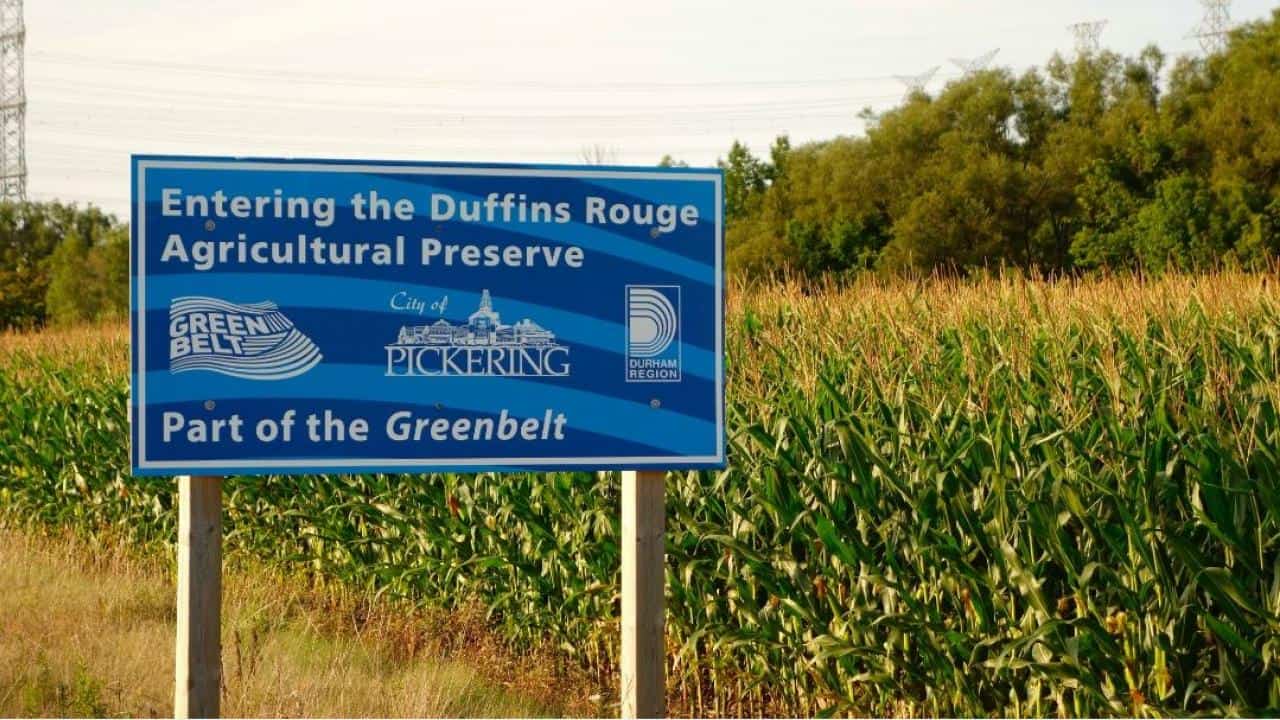Landowners could see $8.3 billion profit in Greenbelt exchange: report
Published August 9, 2023 at 11:40 am

A handful of landowners could see their property value increase by more than $8.3 billion in the Greenbelt exchange.
That is one of the findings from Ontario Auditor General Bonnie Lysyk’s special report tabled today (Aug. 9) in the Legislature.
The decision to remove parts of the Greenbelt for development in 2022 prompted protests, but Doug Ford’s government claimed the protected Greenbelt land was needed to build at least 50,000 new homes as the province faces a housing crisis.
Lysyk, however, calls out the decision in her scathing report.
“Provincial government actions in 2022 to open parts of the Greenbelt for development failed to consider environmental, agricultural and financial risks and impacts, proceeded with little input from experts or affected parties, and favoured certain developers/landowners,” Lysyk said in the report.
Lysyk also noted that the owners of the 15 land sites removed from the Greenbelt could ultimately see more than an $8.3 billion increase in the value of their properties, according to a press release from the Auditor General.
The benefits to certain developers was part of investigations by several media outlets.
“The exercise to change the Greenbelt boundaries in Fall 2022 cannot be described as a standard or defensible process,” Lysyk said.
“The truncated and highly restricted land selection exercise excluded substantive input from land-use planning experts in provincial ministries, municipalities, conservation authorities, First Nations leaders, and the public, while giving preferential treatment to certain developers with direct access to the Chief of Staff to the Minister of Municipal Affairs and Housing.”
Premier Doug Ford and Steve Clark, Minister of Municipal Affairs and Housing, have scheduled a press conference at 1 p.m. today in Toronto, where they are expected to respond to the report.
Lysyk calls for more transparency.
“While the people of Ontario deserve prompt action to solve societal problems like those generated by a need for housing, this does not mean that government and non-elected political staff should sideline or abandon protocols and processes that are important to guide objective and transparent decision-making based on sufficient and accurate information,” Lysyk added.
The audit found that:
- The government’s target to increase housing did not require removing land from the Greenbelt. According to the government’s Housing Affordability Task Force and the Chief Planners of the three affected regions (Durham, Hamilton and York), the removal of Greenbelt land sites was not needed to meet the government’s housing goals. In fact, in late October 2022, the Ministry of Municipal Affairs and Housing (Housing Ministry) had already allocated housing targets to regions to build 1.5 million homes, before land sites were approved for removal from the Greenbelt.
- Political staff had substantial control over the entire Greenbelt amendment exercise. The Housing Minister’s Chief of Staff provided a small team of non-political public service staff in the Housing Ministry the criteria to be used in the selection process, directed the team to alter the criteria to facilitate the selection of many sites provided by the Chief of Staff, and imposed a three-week timeline and confidentiality provisions, limiting the team’s time and ability to assess the land sites and provide alternatives.
- Even though hundreds of site removal requests had been submitted to the Housing Ministry since the Greenbelt was established in 2005, only 22 land sites were considered in the 2022 selection exercise. Of those, only one was proposed by the Housing Ministry’s non-political public service staff, while 21 were provided directly by the Housing Minister’s Chief of Staff. Of the 15 land sites ultimately approved for removal in December 2022, 14 were brought into the exercise by the Housing Minister’s Chief of Staff and one was identified by the Housing Ministry’s non-political public service staff.
- About 67 per cent (4,900) of the approximately 7,400 acres ultimately removed from the Greenbelt are on two land sites for which information was given by two developers to the Chief of Staff in September 2022 at an industry function they all attended. One of these developers subsequently provided information on the removal on three additional land sites, one of which related to a third developer.
- Overall, 92 per cent (6,800) of the approximately 7,400 acres ultimately removed from the Greenbelt related to five land sites involving three developers.
- The 2022 boundary changes removed almost 1,000 acres of wetlands and woodlands from the Greenbelt. As well, the Ministry of Agriculture, Food and Rural Affairs indicated that about 83 per cent of the area removed is classified as prime agricultural land, having the highest quality and capability for agriculture.
- Restrictions on the Housing Ministry’s non-political staff team precluded an assessment of the cost to add needed infrastructure to each of the land sites proposed for removal, how the costs would be apportioned between the public and private sectors, or whether the affected municipalities would even allow those lands to be developed if the removals proceeded.
- While additions were made to the Greenbelt to offset lands removed, 2,400 of the added acres are areas typically already protected and largely undevelopable, and do not contribute agricultural land protection—a core objective of the Greenbelt Plan. Further, although 7,000 acres of the Paris Galt Moraine were added as offsets, the Housing Ministry had recommended a larger portion be added to encompass important natural features and agricultural land. Additions to the Greenbelt were necessary to offset removals because the Greenbelt Act, 2005, prohibits a reduction in the Greenbelt Area.
See the full Ontario Auditor General report here.
INsauga's Editorial Standards and Policies








